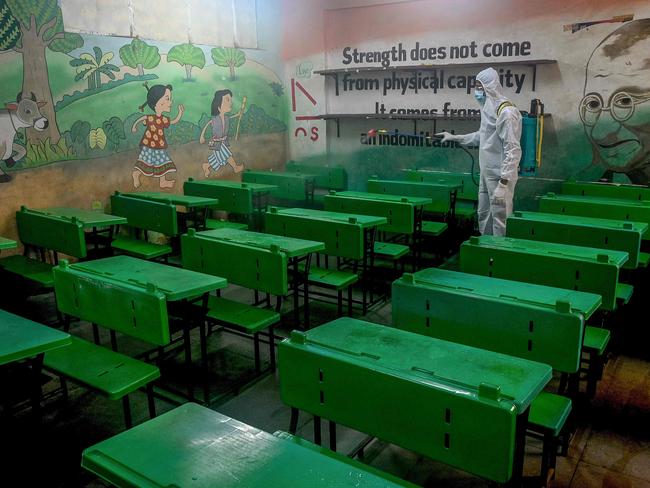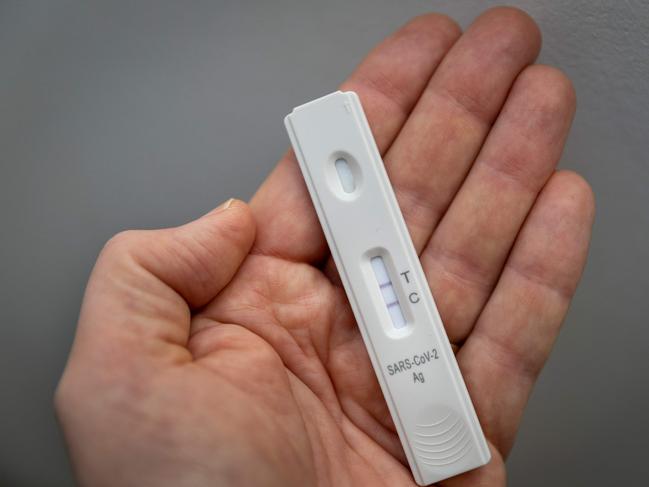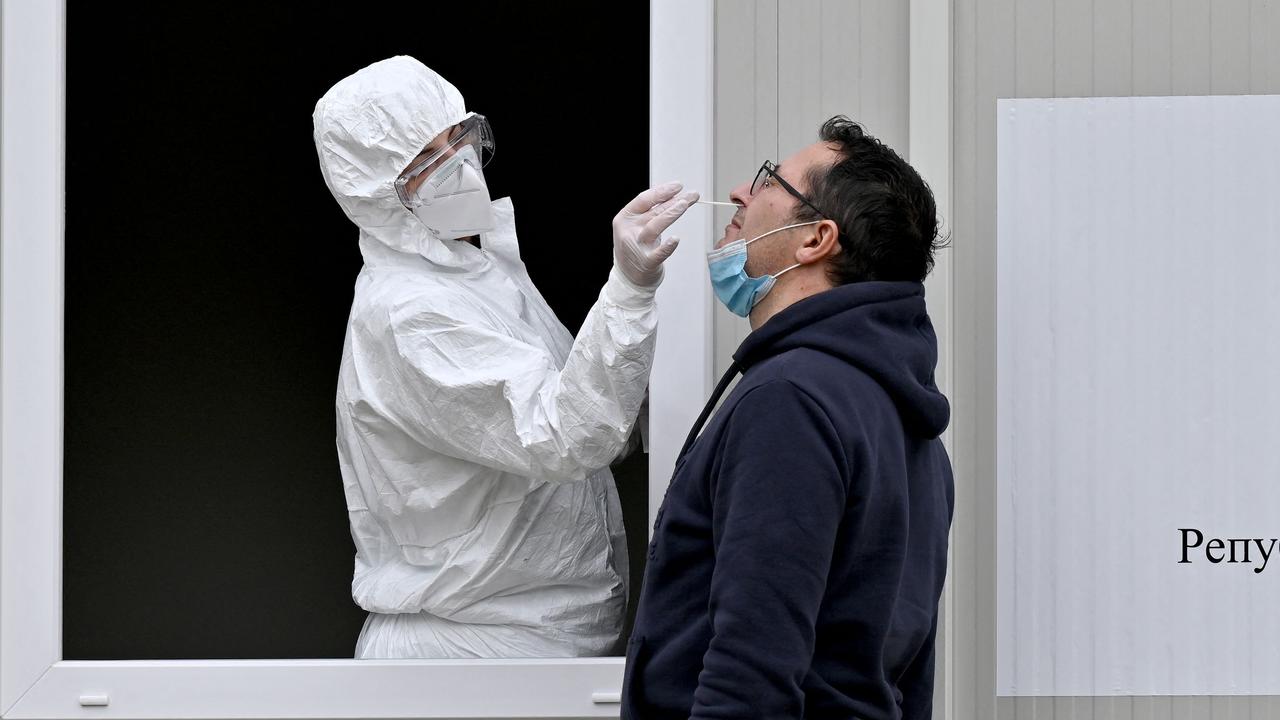Health expert warns about a new Covid-19 variant that‘s even more contagious than Omicron
An Australian expert has warned that a new Covid-19 strain — dubbed a relative of Omicron — could see a bigger wave of cases that may take longer to control.
Coronavirus
Don't miss out on the headlines from Coronavirus. Followed categories will be added to My News.
A version of Omicron that is even more contagious than the original strain could extend Australia’s deadly latest wave of cases, a leading health expert has warned.
Scientists are keeping a close watch on the recently discovered sub-variant of the Omicron version of the Covid-19 virus, dubbed BA.2, to determine how its emergence could affect future pandemic spread.
BA.2, nicknamed ‘Omicron’s little brother’, is believed to have emerged from a mutation of Omicron, referred to as B.1.1.529. Omicron itself was a mutation of the Delta variant.
The latest variant has been detected in 40 other countries, accounting for a majority of most recent cases in some nations including India, Denmark and Sweden.
Scientists fear the ‘stealth’ variant could also be even harder to track than previous strains as it can only be confirmed through lab analysis rather than a PCR test.

University of Melbourne epidemiologist Professor Nancy Baxter told the Today Show that initial data showed BA.2 could be even more infectious than its more common BA.1 ancestor.
“There is a variant they call the “son of Omicron”,’ she said.
“It’s more of a cousin, it’s a variant related to Omicron.”
She said it was unclear if BA.2 would worsen the latest wave of Omicron cases or whether it would even land on Australian shores.
“It looks like, if people can believe it, it could be more contagious than Omicron,’ she said.
“So if it gets here, it may extend our waves and they may take a lot longer to get out of. But we don’t know enough yet, so stay tuned.’

British health authorities have identified hundreds of cases of the latest version of Omicron BA.2, while international data suggest it could spread relatively quickly.
However, the UK Health Security Agency have emphasised that “there is still uncertainty around the significance of the changes to the viral genome,” which required surveillance.
Scientists must evaluate how the virus, which has engendered the worst global health crisis in a century, continues to evolve and mutate.
“What surprised us is the rapidity with which this sub-variant, which has been circulating to a great extent in Asia, has taken hold in Denmark,” French epidemiologist Antoine Flahault told AFP.
WHAT COUNTRIES HAVE REPORTED BA.2 CASES?
A total of 40 countries have uploaded 8,040 BA.2 sequences to GISAID since 17 November 2021.
The first sequences were submitted from the Philippines, and most samples have been uploaded from Denmark. The subvariant BA.2 accounts for 45 per cent of all Covid-19-cases in Denmark while the relative frequency of BA.1 has dropped.
Denmark, Sweden, and Singapore have uploaded 6,411, 181, and 127 cases of BA.2 respectively.
Britain’s UK Health Security Agency (UKHSA) identified more than 400 cases in Britain in the first ten days of January.
India has reported more than 500 cases and cases are rising in South Africa.

IS BA.2 A VARIANT OF CONCERN?
While Omicron BA.1 is still the dominant strain, the BA.2 sub-lineage is a variant under investigation (VUI).
This latest incarnation does not possess the specific mutation used to track and compare BA.1 against Delta, the previously dominant strain.
BA.2 has yet to be designated a variant of concern — but epidemiologist Flahault says countries have to be alert to the latest development as scientists ramp up surveillance.
“(France) expected a spike in contaminations in mid-January: It didn’t happen and perhaps that is due to this sub-variant, which seems very transmissible but not more virulent” than BA.1, he observed.

IS BA.2 MORE CONTAGIOUS OR MORE SEVERE?
According to early analyses, BA.2 has an increased growth rate compared to BA.1.
DOES BA.2 CAUSE MORE SEVERE SYMPTOMS?
Antoine Flahault, director of the University of Geneva’s Institute of Global Health, said “for now we have the impression (BA.2 case) severity is comparable to” classic variant Omicron cases.
“But there are numerous questions on the table” and a need to monitor properties of the new variant on the block.
“Very early observations from India and Denmark suggest there is no dramatic difference in severity compared to BA.1,” tweeted Tom Peacock, a virologist at Imperial College, London.
WILL AVAILABLE VACCINES WORK AGAINST BA.2?
Virologist Tom Peacock said that “there is likely to be minimal differences in vaccine effectiveness against BA.1 and BA.2. Personally, I’m not sure BA.2 is going to have a substantial impact on the current Omicron wave of the pandemic.”
COULD BA.2 CAUSE ANOTHER WAVE OF THE PANDEMIC?
“Several countries are near, or even past the peak of BA. 1 waves. I would be very surprised if BA.2 caused a second wave at this point. Even with slightly higher transmissibility this absolutely is not a Delta-Omicron change and instead is likely to be slower and more subtle,” said Peacock.
French Health Minister Olivier Veran said Thursday that BA.2 did not look as if it would prove a game-changer as variants appear on the scene “fairly regularly”. But he indicated he would reserve judgment.
“What we know for now is that (BA.2) more or less corresponds to the characteristics that we know of Omicron” mark one.

WHY IS BA.2 CALLED ‘STEALTH OMICRON’?
The original strain has a mutation in the form of the deletion of the S gene, while the sub-strain does not have the same mutation.
Since BA.2 does not have the specific mutation seen with the original Omicron, there were theories BA.2 might not show up as positive on tests.
BA.2 _is_ detectable by PCR, these news reports are totally wrong.
— Cornelius Roemer (@CorneliusRoemer) January 16, 2022
Depending on the PCR test used it may not look like BA.1 (the other Omicron). But it will still give a positive result.
Frustrating to see falsehood about non-detectability still around.https://t.co/yeFzgIi84j
Cornelius Roemer, a computational biologist at Switzerland’s University of Basel, said that BA.2 is detectable by PCR and added that depending on the PCR test used, it may not look like BA.1, but will still give a positive result.




